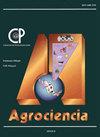使用实物期权来评估龙舌兰酒行业从蒸馏液中生产沼气的盈利能力
IF 0.5
4区 农林科学
Q4 AGRICULTURE, MULTIDISCIPLINARY
引用次数: 0
摘要
在墨西哥,龙舌兰酒行业是酒精饮料行业中第二重要的经济活动,仅次于啤酒行业。龙舌兰酒渣是蓝色龙舌兰酒(agave tequilana Weber vars . azul)发酵醪液蒸馏过程中产生的高有机负荷废水,对龙舌兰酒产区的土壤和水体有较大影响。另一方面,燃料储量的减少导致碳氢化合物价格的不稳定,这使得有必要实施替代燃料方法,如沼气。从这个意义上讲,最近有人指出厌氧消化工艺最适合处理龙舌兰酒酒糟,因为它可以去除污染的有机物,同时产生可在龙舌兰酒工业中就地使用的沼气。在本研究中,通过一个具有技术和经济优势的填充床反应器(PBR)组成的中试系统处理龙舌兰酒糟产生自用沼气的财务可行性进行了计算。在10年的生产周期内评估盈利能力(净现值为1569 001美元),并辅以实物期权方法,考虑到价格波动和扩展期权。结果表明,该项目沼气产量扩大方案为42.85%,具有良好的盈利能力。结论是,沼气生产在财政上是可行的,如果扩大生产,有可能使该系统的盈利能力增加6 325 109美元。本文章由计算机程序翻译,如有差异,请以英文原文为准。
USE OF REAL OPTIONS TO EVALUATE THE PROFITABILITY OF BIOGAS PRODUCTION FROM STILLAGE IN THE TEQUILA INDUSTRY
In Mexico, the tequila industry is the second most important economic activity within the alcoholic beverage industry, after the beer industry. Tequila vinasse is wastewater with a high organic load produced during the distillation of the fermented must of the blue agave (Agave tequilana Weber var. azul), which has a great impact on soils and water bodies in the tequila region. On the other hand, the decrease in fuel reserves causes instability in hydrocarbon prices, which makes it necessary to implement alternative fuel methods such as biogas. In this sense, it has recently been pointed out that the anaerobic digestion process is the most suitable for the treatment of tequila vinasse since it allows the removal of contaminating organic matter, together with the production of biogas that can be used in situ in the tequila industry. In this study, the financial feasibility of the production of biogas for self-consumption from tequila vinasse was calculated with the values achieved from a pilot system composed of a packed bed reactor (PBR) with technological and economic advantages to treat this waste. Profitability was evaluated over a 10-year production horizon (net present value $1 569 001) and was complemented with the Real Options methodology, taking into account price volatility and the option to expand. The results showed that the project is profitable with the 42.85 % biogas production expansion option. It is concluded that biogas production is financially feasible and it is possible to increase the profitability of the system by $6 325 109 if production is expanded.
求助全文
通过发布文献求助,成功后即可免费获取论文全文。
去求助
来源期刊

Agrociencia
农林科学-农业综合
CiteScore
0.50
自引率
33.30%
发文量
51
审稿时长
18-36 weeks
期刊介绍:
AGROCIENCIA is a scientific journal created and sponsored by the Colegio de Postgraduados. Its main objective is the publication and diffusion of agricultural, animal and forestry sciences research results from mexican and foreign scientists. All contributions are peer reviewed. Starting in the year 2000, AGROCIENCIA became a bimonthly and fully bilingual journal (Spanish and English versions in the same issue). Since 2007 appears every month and a half (eight issues per year). In addition to the printed issues, the full content is available in electronic format.
 求助内容:
求助内容: 应助结果提醒方式:
应助结果提醒方式:


